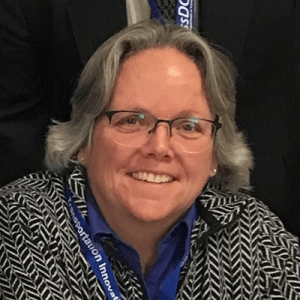By Elizabeth Dugan
associate professor in the Department of Gerontology at the McCormack Graduate School at UMass Boston
In a
country growing rapidly older, New England has the potential to become a kind of living laboratory for all things related to aging. Several of the nation’s oldest states and communities are here, and it is in our regional DNA to innovate. We are also home to many professionals who can establish New England as a global Longevity Hub — academics, biomedical researchers, financial service providers, technology designers, venture capitalists, housing developers, and experienced government and private sector leaders with a vision of what is possible. Many have not focused their attention on aging yet but, given the potential in this area, they should.
Historically speaking, population aging is new and presents a growing, largely untapped resource. Aging is something we all have in common, and we can leverage that collective reality to create moon-landing levels of advancements. We need a mindset that sees the older population as a solution and opportunity, not a burden or cause for panic.
One of the keys to seizing this opportunity is to measure what’s going on in our cities and towns and identify how a given community’s aging circumstances change over time. This goes far beyond simple head counts of how many are over 65. It requires granular information on a community-by-community level to really be effective.
We collect community information about important elements of life like transportation, housing, employment, safety, civic participation, wellness, health services utilization, chronic disease, mental and behavioral health, community support, and the economics of aging. Our research suggests that social factors contribute a great deal to elder community health, some of them complex (increased public safety and walkability, for example) and some as simple as always using microphones in public meetings to make sure those with hearing impairments can fully participate. This is good news because it means we can change things for the better, if we have the will and grit to do so.
Snapshots of healthy aging for a community or state are helpful. But information collected repeatedly over time is even better in that it shows where we’ve been, where we are, and the direction we’re headed. In Massachusetts, the results show clear trends and quantify how the state is aging. Our older population is getting larger both in sheer numbers and as a percentage of the total population. The so-called “young-old” set of residents — those 65 to 74 years old — is an increasingly larger part of the elder population. The older population has also become more diverse in terms of race, ethnicity, and LGBTQ status.
Our work has shown how much the circumstances of older people in different communities can vary. A single, inflexible idea will rarely meet a need or solve a problem everywhere. Widely available technology can help older adults continue to live independently, whether it makes our homes more manageable, monitor our health, or allow us to remain connected to family, work, or volunteer opportunities. But most of the things older adults need or want in order to live a better life — services, mobility, jobs — depend on local solutions.
For example, one common issue for older adults is the need for better transportation options. But the kind of innovation that would make a difference in larger cities — such as greater access to bikes and safe bike paths — won’t work as well in rural areas. Solutions need to take into account local demographics, infrastructure, and economics. The Healthy Aging Data Reports reveal the disparities from one community to the next and can guide our actions and investments.
We need to invest in educational programs that will build the workforce for the Longevity Hub and help a younger generation imagine the future of aging.
Finally, we need to stoke political energy to generate and sustain the movement to create a more age-friendly society. We can cultivate the kind of technological and practical innovation that will serve a growing older population that we’ll all be part of someday — if we’re lucky. Let’s do the work now so that in 50 years we can look back and see another revolution we led and prospered from. As the Longevity Hub, Massachusetts can be a model for the rest of the nation and the world.


Leave a Reply